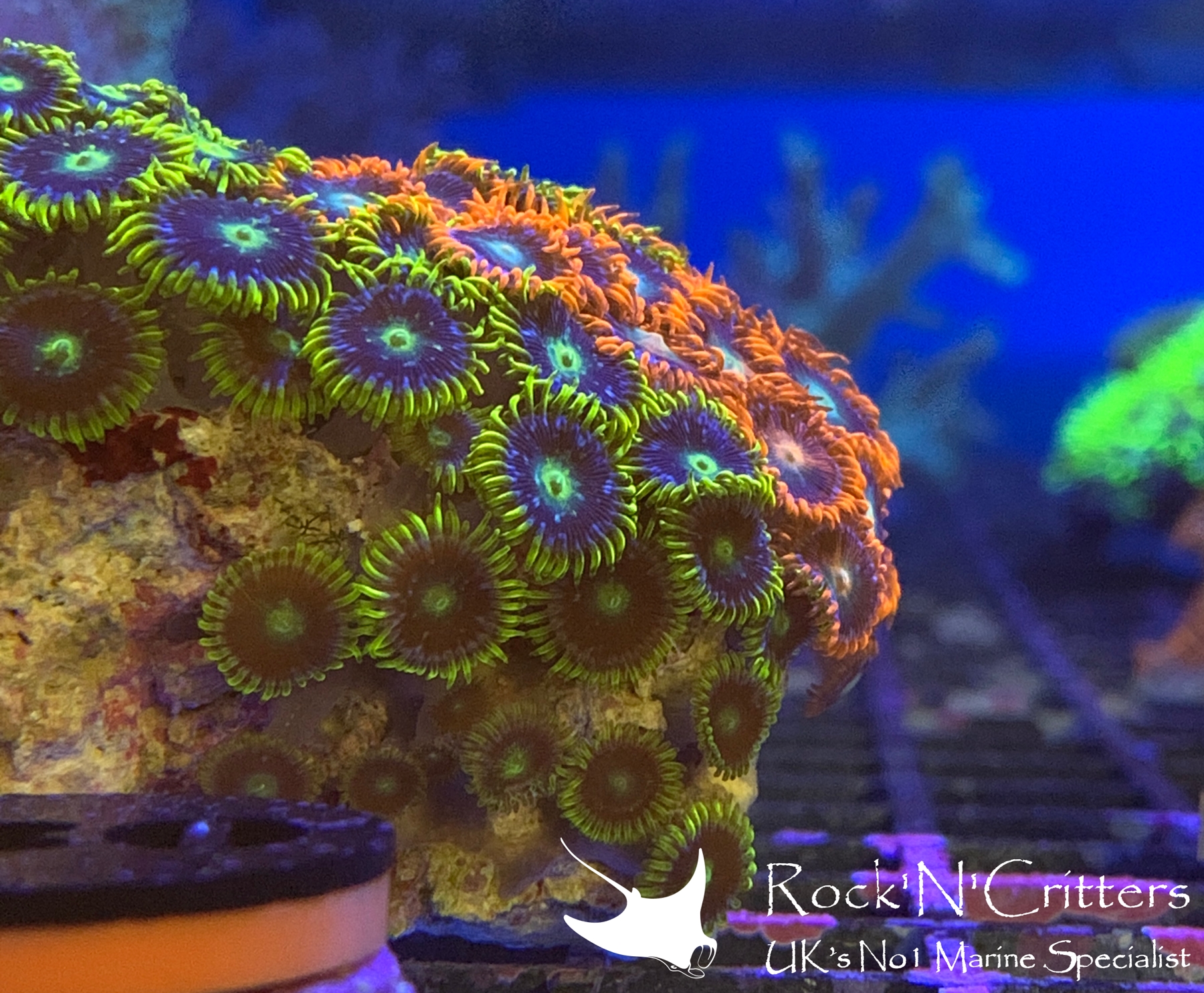
We've been working hard on the Zoanthid side of the house lately both with frags and colonies up for sale. Let's have a look at what's on offer at the moment and why Zoas might be just what you've been looking for in your reef tank!
Zoas for sale! Zoas for sale! There, now I've got that out of my system let's talk. Why are Zoas so popular and why do I think that they're a good addition for your reef? Well, first off I wouldn't be so careless to say they are perfect for everyone's reef because everybody's reef is different but for alot of hobbyists Zoas are an easy to care for coral which add splendid and varied colour to the lower sectors of your rockwork.
Zoas are in fact closely related to anemones which is why they are sometimes referred to as colonial anemones. The reason behind the 'colonial' part of this naming is down to how a zoa colony is structured. Each polyp is linked by flesh in an almost web like fashion, hence 'colonial'. Unlike anemones however they do not sting other corals. The main threat they pose to neighbouring corals is that they can grow over them and block out light. They are therefore often sited on isolated rocks or at the bottom of the rockwork where there is a natural barrier such as shadowed areas to stop them growing into other coral's space.
Now whilst I'm on the subject of the risk of Zoas, I must mention Palytoxin and this comes with a strong warning for the hobbyist:
Palytoxin is a toxin present in some Zoas, predominantly Palythoas. The warning for the hobbyist is that Palytoxin is dangerous to humans. If you come into contact with this toxin you will almost certainly require medical treatment. That being said, Palytoxin exists in the flesh of the coral. Palytoxin is released from the coral when the flesh has been damaged such as when being cut with a bandsaw or when the rockwork with Zoas on is scrubbed. Examples of when reef keepers have been exposed to this toxin have almost always been when the hobbyist has either been cutting, scrubbing or boiling rocks. If you keep Zoas then you should ensure you do not scrub or boil rockwork with Zoas present. If you are intending on propagating Zoas then you should research the process carefully and wear the appropriate protective equipment.
Don't let this put you off Zoas though. Aslong as you do not aggressively damage the coral then there is a low risk of any toxin being released. Plenty of hobbyists keep zoas and propagate them with no issues.
So, aslong as you haven't been deterred, let's have a look at what Zoas have to offer.
I chose the Zoas above from the stock listings because I think they showcase just how many colours you can get out of Zoas. Pinks, green, orange, yellow, reds, blues and everything in between. Whilst corals such as Acropora can often present amazing colours, they come with a difficult care requirement. Zoas are a relatively easy to care for coral which put up with alot of punishment from the reef keeper whilst still rewarding us with amazing colour. This is why I think, if you are looking for something to brighten up your lower rockwork then you should really consider having a look at our Zoas.
If you like the look of Zoas then check out the stock we have available right now on the website at the link below. (Use the Genus filter on the left hand side of the screen and select Zoanthus).
CLICK HERE FOR ZOAS